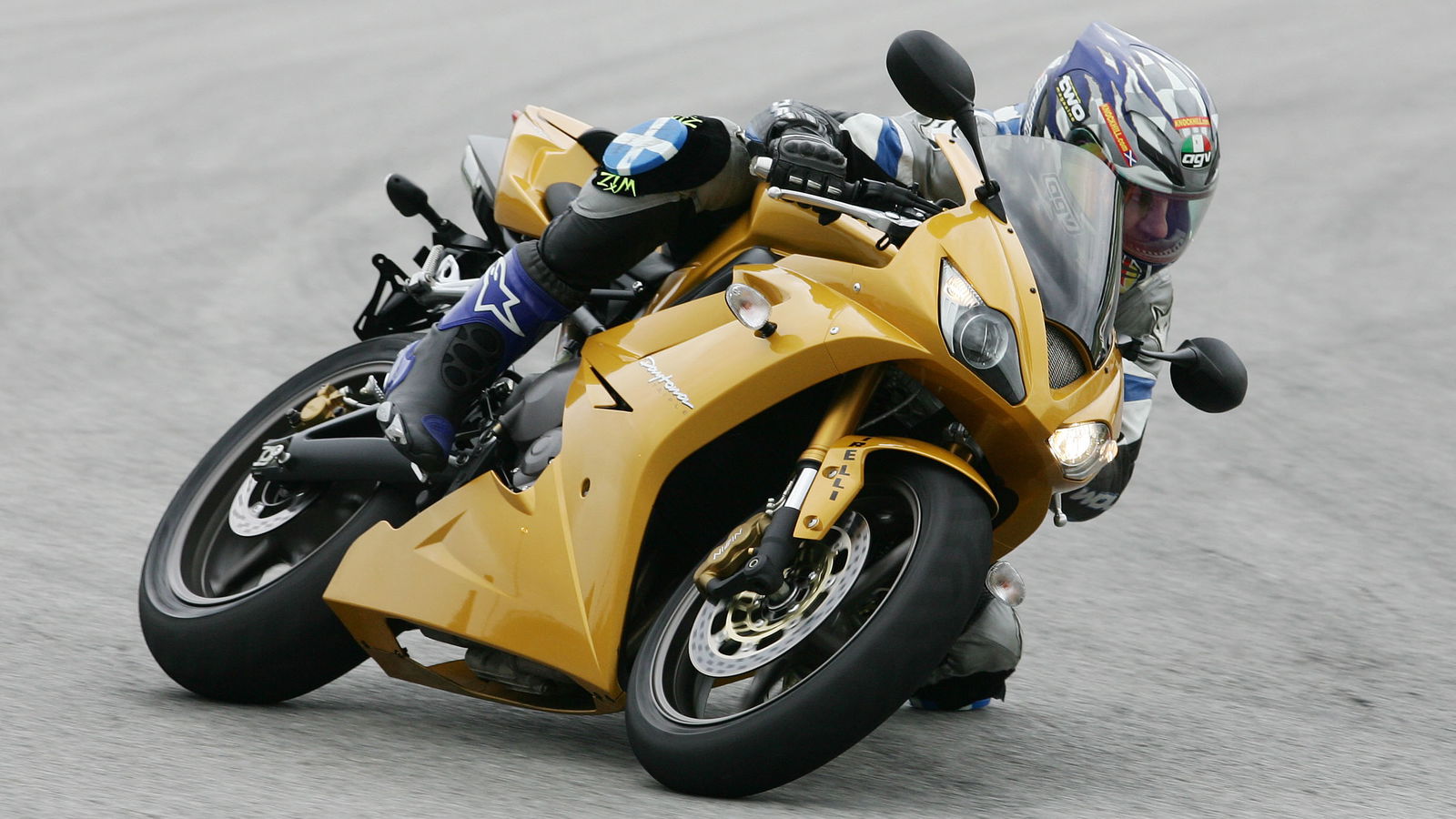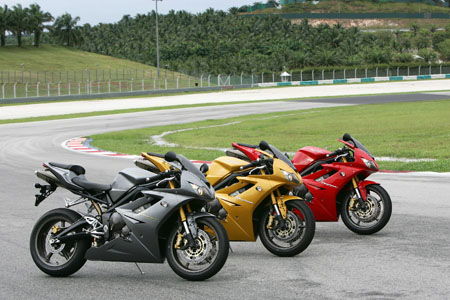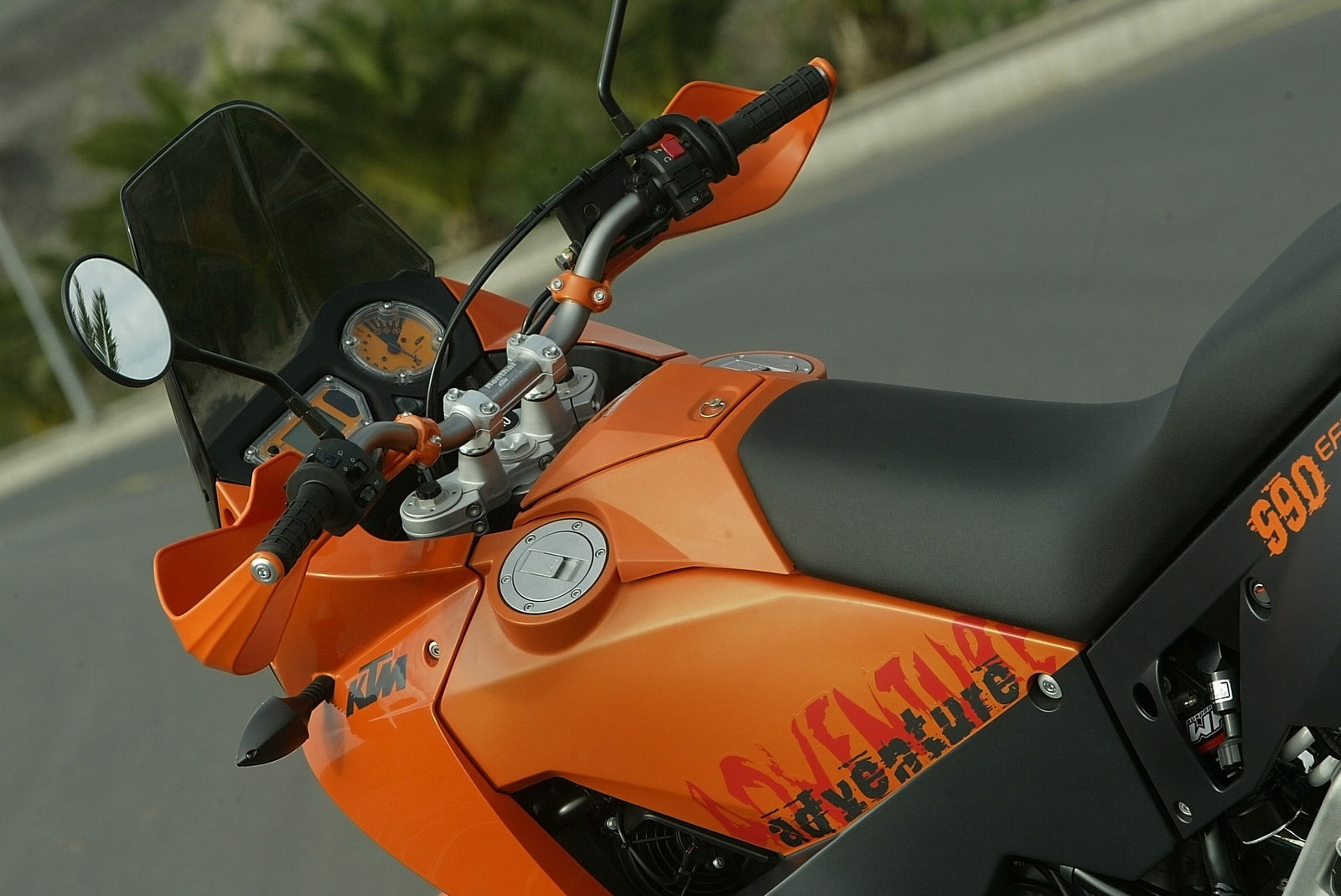First Ride: 2006 Triumph Daytona 675
It's the one we've all been waiting for. Niall Mackenzie finds out if Triumph's new 'Urban Sports' bike delivers on the hype

 |
I count myself very lucky. I have a MotoGP circuit on my doorstep and the Triumph factory is 20 minutes away so, in theory, I could have tested the new Daytona 675 Triple and had it back by lunchtime. No one told Triumph this, so instead I got to fly half way round the world to try it at the Sepang Circuit and on the road in Malaysia.
My one and only previous visit to this fast, flowing circuit was in 2001, to demo the stillborn Sauber Petronas MotoGP bike. Like the new 675, it used an inline three-cylinder engine, but there the similarities end. The Sauber Petronas bike went in the bin; people have been slapping down deposits on the Triumph in their hundreds.
I enjoyed the 600 and 650 Daytonas, and I was also one of the few journos that thought the TT600 was a bit of fun. But all three models were a fair way off rocking the Japanese. Looking back, Triumph seemed to wander off into four-cylinder land but found it didn't suit the firm's character or heritage. I believe it's right back on track and doing what it does best.
At a glance and without graphics, the red 675 could be a Ducati 916, but get up close and it's more 21st century, much more compact and even better looking. The black, beautifully crafted frame and swingarm complement the quality finish. This theme continues under the bodywork, unlike some recent models that have had the odd oversize bolt protruding when you delve into hidden areas.
Since my first sighting of it at the NEC in November I've been looking forward to riding this bike. Being a small sports bike,
I stupidly thought it would feel similar to other small sports bikes. But from the moment I hit the starter button and set off I realised I was in for a very different experience. The familiar throaty growl coming from the noisier (aftermarket) pipe immediately reminded me I was on board a Triumph. At first this seemed quite peculiar, but after a few track sessions everything began to make sense. The 675 may have the vital statistics of a skinny CBR600RR, but the track riding experience couldn't be more different.
It has a similarly roomy riding position but, while the Honda is all about high revs and constant gear shifting, the Triumph functions best using the mid-range power. This gives greater flexibility which, in turn, means fewer changes. It also has more engine braking, so getting back to third and second while braking hard must be left as late as possible to keep everything in line.
Gear shifting is very positive, if not super quick. After unsuccessfully attempting to get back to first for a few dead stop corners I decided that settling for second with more corner speed was a better option. I believe a slipper clutch would have complemented this engine well but Triumph chose not to fit one as it wasn't thought of as necessary and would be a costly addition.
The baby triple is very smooth at low rpm and gradually builds to pull strongly from 10,000rpm onwards to rev limiter, which kicks in just over 14,000rpm. Maximum power is a claimed 123bhp at 12,500rpm, and at a dry weight of 165kg this compares nicely with the four-cylinder competition.
Most of the Sepang circuit is fast and flowing and this suited the little Triumph. It was only on slow, tight corners I had a lack of feel from the front end. But there had been downpours in the previous week, which will have compromised ultimate grip from the normally sticky Pirelli Super Corsa Pros. As I built momentum I encountered excessive weight transfer on the close-to-standard suspension settings. You often get this when you hit the track. A quick visit to a Triumph technician cured it; we ended up with the front preload three rings from max, compression three clicks from max and rebound four clicks from max. At the rear the preload was half a turn more from standard, compression six clicks from max and rebound three clicks from max.
This firmed everything up nicely, though I still wasn't totally confident to push the front. With more time, my next move would have been to fiddle with the tyre pressures.
Triumph claims to have put a lot of effort into giving the 675 class-leading brakes. This could well be true, since there appeared to be zero fade after continual hard braking and plenty of power left in reserve. The rear 220mm disc also worked well, yielding just the right amount of feel.
Triumph may want to believe this bike is not in direct competition with the current CBRs and R6s, but I'll bet you'll see a load at track days this summer. And why not? With nimble handling plus a very capable, distinctive engine, this tiny motorcycle can take on most of the competition. On top of that, the rear pegs, tail light and number plate can be whipped off in an instant.
There's also a lot of extras. The most expensive, but worth saving for, is the Arrow Titanium Race Exhaust. At £1299.99, the price is comparable with aftermarket systems for other sports bikes but this one also includes the important engine re-map. I tested one and the significant 5bhp gain is backed up by a 7kg weight loss, which improves handling and the old power-to-weight ratio. The motor feel is cleaner and free revving, which got me onto the limiter earlier on at least three parts of the circuit.
While I had fun on the track, the Daytona Triple is probably most at home on the road. Good low speed bump absorption is helped by lightweight five spoke wheels which means a plush ride over most surfaces. As was the case in the previous Daytonas, high speed stability is excellent, except this time it's aided by a steering damper. Where it really scores on the road though, is with engine flexibility. The 41mm throttle bodies combined with multi-hole injectors deliver smooth power from 2000rpm, no matter what gear you choose.
This means you can have a relaxing cruise or, if your mood changes, just bang it down the gears, hoick the front wheel up and be naughty for a while. This is not condoned by Triumph, but as the bike was gagging for it I had to oblige.
The tasteful dash and nicely machined tope yoke is light years ahead of the last Daytona. A good-looking dash is a must for me considering how much time I spend looking at it while riding. The tacho is like a Swiss watch. Ten out of ten here.
Triumph has at last ticked nearly every box with the new Daytona and I love it. It might not be everything to everybody but it's very different and a joy to ride. It will also be a bike that you'll visit in the shed with a coffee, just to enjoy the view.
VERDICT
Every bit as good as we dared to hope, the Daytona 675 is a super-competent track tool that can trump its competitors on road manners. Gearbox could be slicker, but the bike is different and gorgeous
FRAME
The aluminium frame wraps over the top of the engine to take advantage of the triple's narrowness. For strength and light weight the swingarm is a two-piece casting
ENGINE
The motor is extremely narrow and short thanks to a stacked gearbox and three-cylinder layout. The gearbox is a close ratio design and peak power is a claimed 123bhp
BRAKES
The four piston radial calipers are actuated by a radial master cylinder for more progressive feel. To reduce unsprung weight, the 675 uses small 308mm discs
INDUCTION
Air is drawn from the central scoop through the headstock and into the airbox. An electronic flap in the airbox superintends air flow to optimise fuelling.

Click to read: Triumph Daytona 675 owners reviews, Triumph Daytona 675 specs and to see the Triumph Daytona 675 image gallery.
I COUNT MYSELF very lucky. I have a MotoGP circuit on my doorstep and the Triumph factory is 20 minutes away so, in theory, I could have tested the new Daytona 675 Triple and had it back by lunchtime. No one told Triumph this, so instead I got to fly half way round the world to try it at the Sepang Circuit and on the road in Malaysia.
My one and only previous visit to this fast, flowing circuit was in 2001, to demo the stillborn Sauber Petronas MotoGP bike. Like the new 675, it used an inline three-cylinder engine, but there the similarities end. The Sauber Petronas bike went in the bin; people have been slapping down deposits on the Triumph in their hundreds.
I enjoyed the 600 and 650 Daytonas, and I was also one of the few journos that thought the TT600 was a bit of fun. But all three models were a fair way off rocking the Japanese. Looking back, Triumph seemed to wander off into four-cylinder land but found it didn't suit the firm's character or heritage. I believe it's right back on track and doing what it does best.
At a glance and without graphics, the red 675 could be a Ducati 916, but get up close and it's more 21st century, much more compact and even better looking. The black, beautifully crafted frame and swingarm complement the quality finish. This theme continues under the bodywork, unlike some recent models that have had the odd oversize bolt protruding when you delve into hidden areas.
Since my first sighting of it at the NEC in November I've been looking forward to riding this bike. Being a small sports bike, I stupidly thought it would feel similar to other small sports bikes. But from the moment I hit the starter button and set off I realised I was in for a very different experience. The familiar throaty growl coming from the noisier (aftermarket) pipe immediately reminded me I was on board a Triumph. At first this seemed quite peculiar, but after a few track sessions everything began to make sense. The 675 may have the vital statistics of a skinny CBR600RR, but the track riding experience couldn't be more different.
It has a similarly roomy riding position but, while the Honda is all about high revs and constant gear shifting, the Triumph functions best using the mid-range power. This gives greater flexibility which, in turn, means fewer changes. It also has more engine braking, so getting back to third and second while braking hard must be left as late as possible to keep everything in line.

